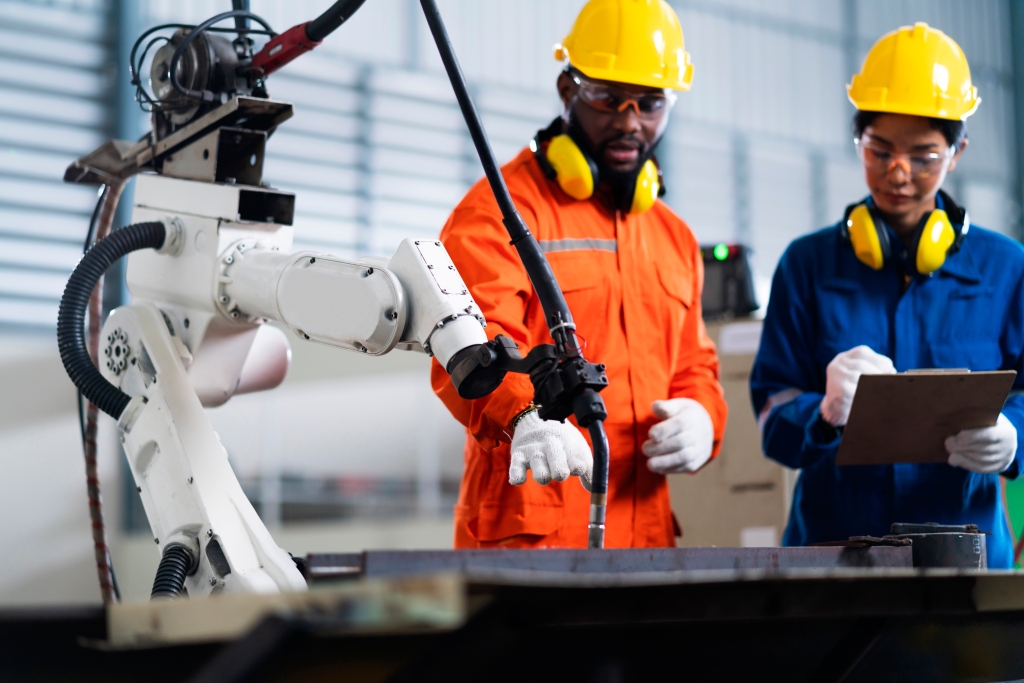Are you curious about the world of robotics and its endless possibilities?
From manufacturing and healthcare to transportation and entertainment, robotics has been transforming industries and revolutionizing the way we live and work.
From automated factories to self-driving cars, robotics has been revolutionizing industries across the globe. As technology continues to advance, the applications of robotics are becoming increasingly creative and diverse, with the potential to transform everything from healthcare to agriculture.
Robotic applications are now present in almost every phase of our lives, from the mundane to the extraordinary. They can be found in industries such as manufacturing, logistics, and even hospitality. The potential of robotics to revolutionize these industries lies in their ability to perform repetitive and mundane tasks with precision, efficiency, and consistency. This can help businesses improve productivity, save time, and reduce costs.

One of the most innovative robotic applications is in the healthcare industry. Robotic technology has transformed surgery, allowing for minimally invasive procedures that reduce the risk of complications and improve patient outcomes. Robots can also be used to assist with physical therapy and rehabilitation, helping patients regain strength and mobility after an injury.
Explore some of the most exciting and creative robotic applications currently in use:
- Agriculture
Robotic technology is being used to help farmers automate many of their processes, such as planting, harvesting, and monitoring crops. Robots can help farmers reduce labor costs, increase efficiency, and improve crop yields.
For example, robotic harvesters can pick crops faster and more accurately than human labor, while autonomous tractors can plow fields and apply fertilizers without any human intervention.
- Manufacturing
Robotic technology has been a mainstay in the manufacturing industry for years, with robots performing a range of tasks such as assembly, painting, and welding. However, advancements in robotics technology are now allowing for even more complex and precise manufacturing processes.
For example, 3D printing robots can create intricate designs and shapes that would be difficult for humans to produce.
- Healthcare
Robots are also making significant contributions to the healthcare industry. Surgical robots, for instance, are being used to perform procedures with greater precision, which can lead to shorter recovery times and reduced risk of complications. Similarly, telepresence robots are being used to help doctors and nurses communicate with patients remotely, particularly during the COVID-19 pandemic.
- Logistics and Warehousing
Robotics technology is transforming the way goods are moved and stored in warehouses and distribution centers. Robots are being used for jobs such as inventory management, picking and packing, and order fulfillment. For example, Amazon uses robots to move goods around their massive fulfillment centers, which has led to faster delivery times and increased efficiency.
- Education
Robotics technology is also being used in educational settings to teach students about engineering, programming, and robotics. Robotics kits and tools allow students to build and program their own robots, giving them hands-on experience with cutting-edge technology.
- Space Exploration
Robots are playing an increasingly important role in space exploration. Robotic rovers are being used to explore the surfaces of planets like Mars, collecting data and samples that would be difficult or impossible for humans to obtain. Additionally, robots are being used to assist astronauts aboard the International Space Station with tasks such as maintenance and repairs.
- Entertainment
Robotics technology is also being used in the entertainment industry, particularly in the creation of animatronics and other special effects. Theme parks, for example, use robots to create lifelike experiences for visitors, while movie studios use robotics technology to create realistic special effects.
- Home and Personal Use
The use of robotics in homes and personal lives is becoming more common, with the development of robotic vacuum cleaners, lawnmowers, and even pet feeders. Robots can also be used for companionship and emotional support, especially for elderly or disabled individuals.
- Transportation
Self-driving cars are no longer a sci-fi concept but a reality. Companies like Tesla, Waymo, and Uber are developing autonomous vehicles that can navigate roads and traffic without human intervention. Drones are also becoming increasingly popular for delivering goods, monitoring traffic, and conducting search and rescue missions.
The potential of robotics to transform industries is only beginning to be realized. As technology continues to advance, we can expect to see even more creative and innovative robotic applications emerge. From assisting with everyday tasks to pushing the boundaries of science and exploration, robots are changing the way we live and work.
In conclusion
The rise of robotics is transforming industries across the globe, with innovative applications that are improving efficiency, productivity, and quality of life. From healthcare to agriculture, entertainment to artificial intelligence, the potential of robotics is endless.
As we continue to embrace this exciting technology, we can supposed to see even more groundbreaking robotic applications emerge, shaping the future of our world.